I've had several questions recently about the Bambeco solitary bee house sold at Costco (they sell the Swiss Alps model), so I decided to head to my local store to check it out. While the price is amazing, the house has a few features that are not so ideal. For details on what makes a good solitary bee house, see here and here.
What's good: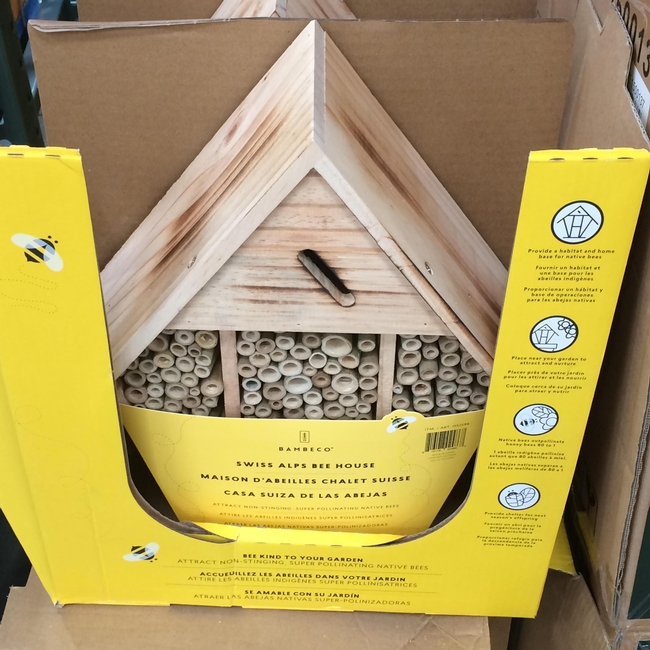
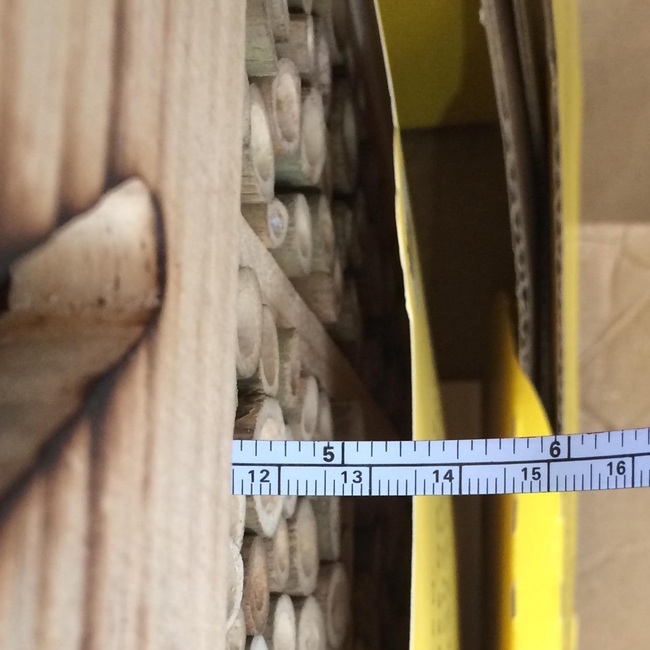
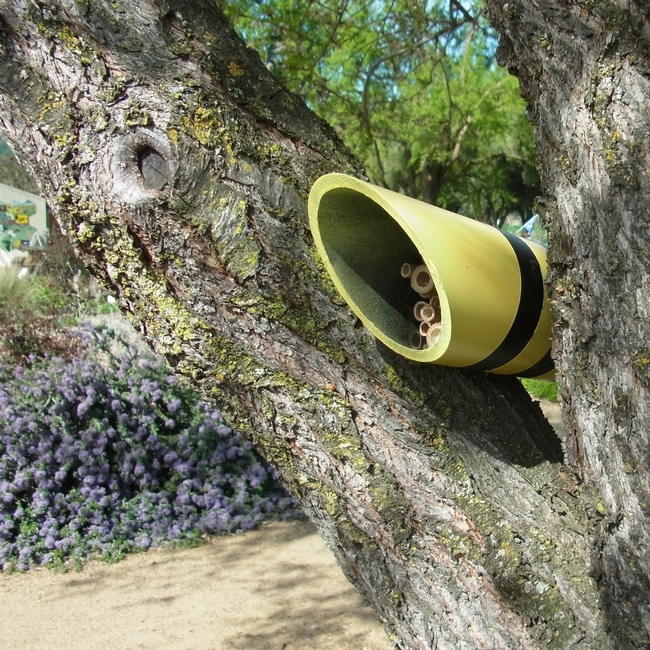
The depth. At 4.5 inches deep, it is sufficiently deep to allow the production of female and male bees.
What's not so good:
The nesting tube diameter. While the variety of diameters is good, solitary bees need tubes from 3/16 to 5/16 in diameter. While other arthropods, such as spiders, may use the larger tubes, they will not be used by bees.
Limited protected overhang. The nesting tubes should be placed so that the entrance has a bit of protection. That's why we make our houses at least an inch longer than the tubes.
The nesting tubes are glued in place. Once a tube is used it should be replaced to help prevent the build up of pathogens.
March 13, 2019: winter update
The bee house is not holding up well to the winter weather. Here's a photo showing some superficial mold as well as separation of the sides from the base. Note that I added extra protection by attached redwood fence boards to increase the cover of the roof.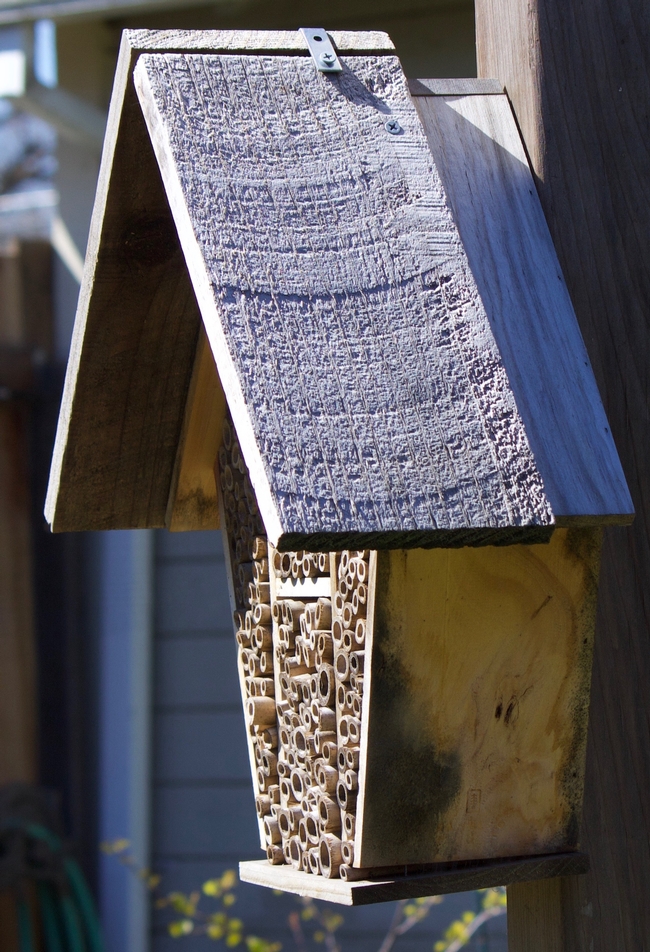
March 27, 2019: comments on the 2019 model
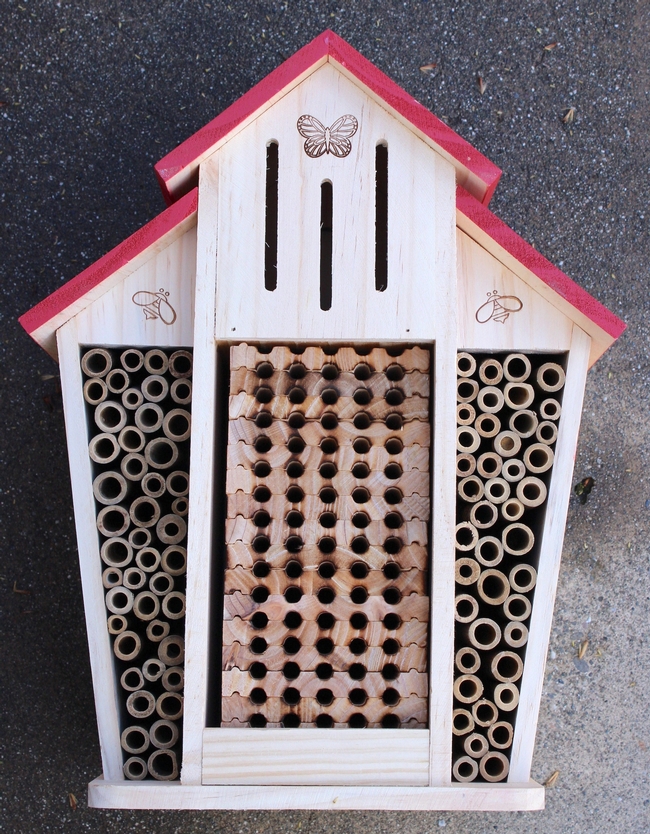


Update July 1, 2019
The Bambeco bee house shown above is not holding up well to the weather. After three months outside (there was one week of rain during this period), the paint on the roof is peeling.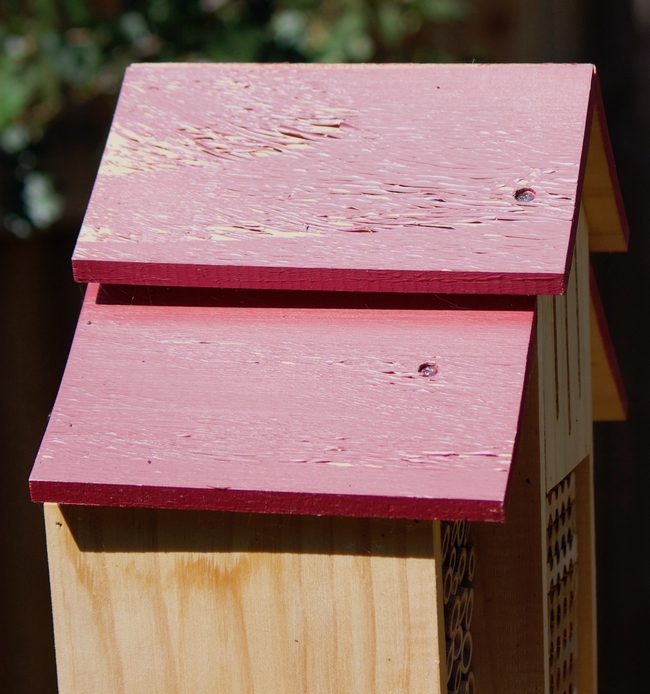
Update October 7, 2019
I have discarded the 2019 bee house. The paint continued to peel and the wood on the roof started to split. I removed the wooden blocks in the front of the house and will use these next year. For folks who have been asking what a correctly designed bee house looks like, here is an example of the one we sell at the Haven. 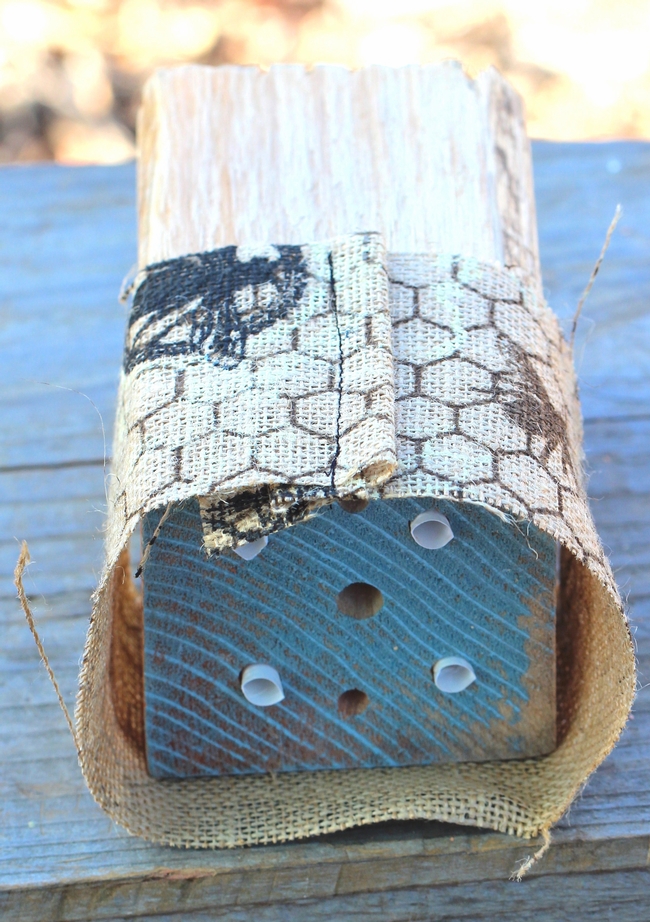
What makes it correct:
1. It's made out of redwood; studies have shown that bees prefer to nest in wood.
2. The depth and diameter of the nesting tubes are correct. The holes are drilled 5 inches deep, and the openings range from 3/16 to 5/16 inch in diameter.
3. Paper straws have been inserted into the 1/4 inch diameter holes (this is the only size straw available). This means that the tube can be cleaned out after use. I suggest plugging the others with wood filler after use so that they are not re-used.
4. The front of the block has a pattern to it. This may help the bees recognize their individual nest entrance. There is also evidence that a blue front is more attractive to one of the mason bee species.
5. The block has a piece of burlap shading the entrance. Bees are more likely to use the blocks if the entrance is shaded.